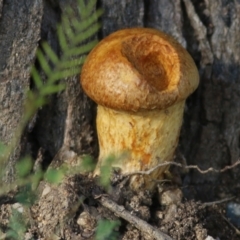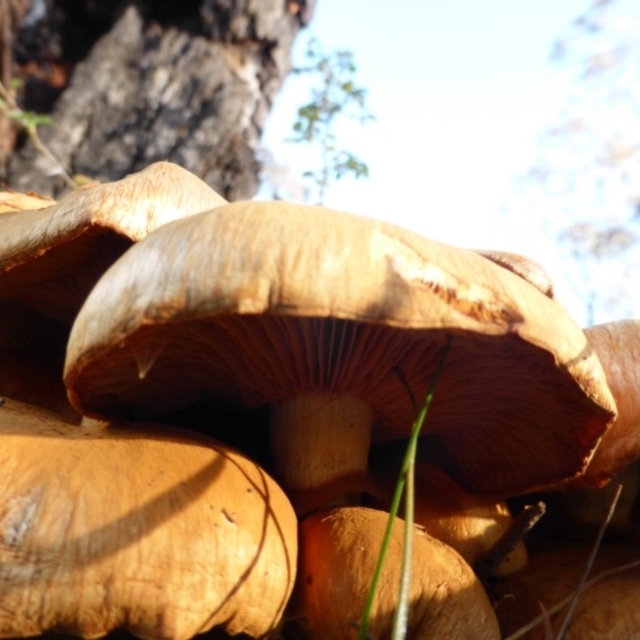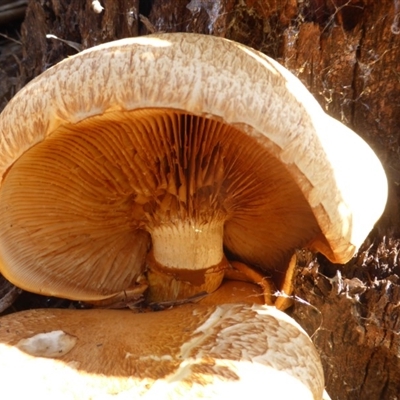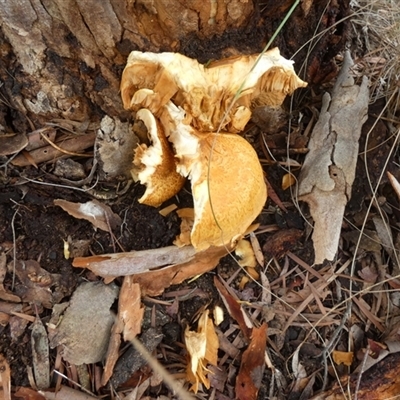Gymnopilus junonius (Spectacular Rustgill)
The fruit body is a mushroom with a cap atop a central stem. The cap is convex but may become flat with age. It is golden-brown to orange-brown, dry and up to 15 centimetres in diameter. Gills are creamy-yellow and seem to change to rusty-brown with age but that colour is due to the spores becoming mature, for they darken as they mature. The stem is yellowish to tan and up to 10 or so centimetres long and 2 in diameter.
There is a partial veil that covers the gills in an immature mushroom. As the cap expands that veil breaks at the cap margin and leaves a remnant as a ring of tissue around the upper part of the stem. There is no universal veil.
Spore print: rusty brown.
The fruit bodies grow on dead wood or around the bases of live trees or shrubs, in a wide variety of habitats, usually in dense clusters with overlapping caps.
Look-alikes
People may think they have Armillaria when they see a cluster of Gymnopilus junonius, especially if they know that Honey fungus is often used in the vernacular names of Armillaria species, for that Gymnopilus could be aid to have a colour similar to that often found in honey. Furthermore, the mushrooms of both genera may grow in dense clusters. However, species of Armillaria give a white spore print and their gills are white to creamy.
Gymnopilus junonius is listed in the following regions:
Canberra & Southern Tablelands | Southern Highlands | Albury, Wodonga | South Coast | Greater Sydney | Hunter Region | Hume | Gippsland | Tasmania | South East South Australia
Species information
- Gymnopilus junonius Scientific name
- Spectacular Rustgill Common name
- Not Sensitive
- Local native
- Non-invasive or negligible
- Up to 1037.3m Recorded at altitude
- Machine learning
- External link More information
-
Synonyms
Gymnopilus pampeanus
Location information
-
Places
Yackandandah, VIC







